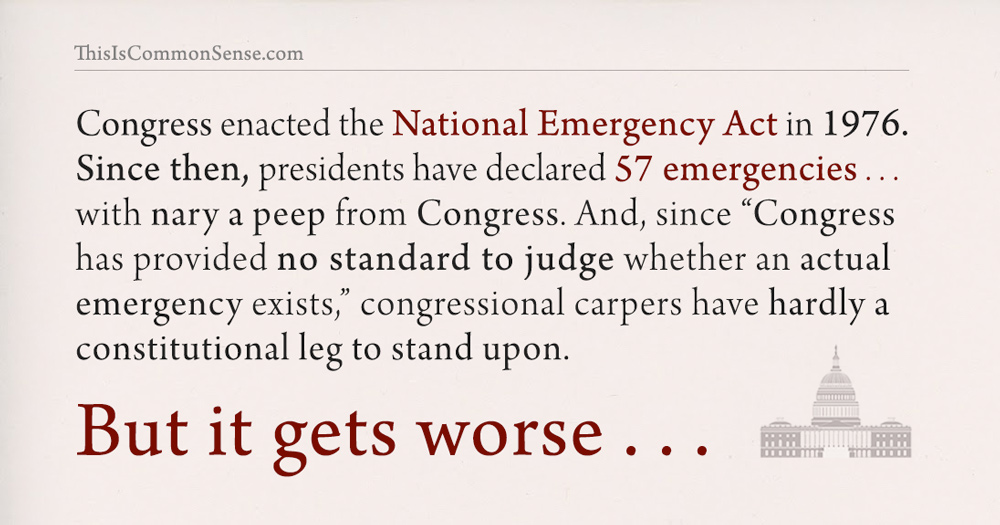When members of Congress run for the Presidency, they often talk a good game about acting within the boundaries set by the Constitution … but maybe we should roll our eyes, at least a bit, when senators like Elizabeth Warren and Corey Booker complain about President Trump’s Executive Order plan for building his infamous Wall.
A workaround like that seems like an overstepping of constitutional bounds, sure. But, as Peter J. Wallison wrote for the Wall Street Journal on Saturday, congressional protest suffers from a rather big problem.
Congress enacted the National Emergency Act in 1976. Since then, presidents have declared 57 emergencies … with nary a peep from Congress. And, since “Congress has provided no standard to judge whether an actual emergency exists,” congressional carpers have hardly a constitutional leg to stand upon.
But it gets worse.
Congress doesn’t even have much leverage in the “power of the purse” — for it has given much of that away, too.
For example, when “a Democratic Congress created the Consumer Financial Protection Bureau in the Dodd-Frank Act of 2010,” writes Wallison, “it provided that the agency would be funded entirely by the Federal Reserve, not through annual appropriations from Congress.”
This interests me, especially, since I quoted Senator Elizabeth Warren ballyhooing her support for this very program at Townhall last weekend. She thinks she did something smart in supporting that regulatory body.
But like so much other ultra-clever legislative conniving, she placed it outside of congressional control.
With genius moves like this, congressional Democrats may have great difficulty restraining President Trump.
Serves them right, of course. But not us — it does not serve the people at all.
We need constitutional limits.
This is Common Sense. I’m Paul Jacob.

—
See all recent commentary
(simplified and organized)


